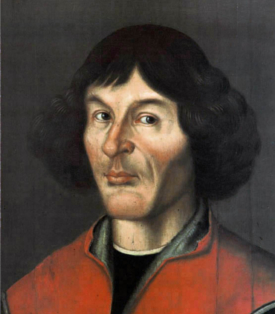- Series:Astronomy, Creation, God’s Design, Transcript English
Isaiah 45:18
“For thus saith the LORD that created the heavens; God himself that formed the earth and made it; he hath established it, he created it not in vain, he formed it to be inhabited: I am the LORD; and there is none else.”
 Have you heard of the Copernican Principle? Some of you might be nodding your head at the moment, though I suspect that most won’t. Don’t feel bad if you hadn’t heard of it. Copernicus hadn’t heard of it either! Copernicus died in 1543, but that astronomical Principle which bears his name was invented in the mid-20th Century by Hermann Bondi.
Have you heard of the Copernican Principle? Some of you might be nodding your head at the moment, though I suspect that most won’t. Don’t feel bad if you hadn’t heard of it. Copernicus hadn’t heard of it either! Copernicus died in 1543, but that astronomical Principle which bears his name was invented in the mid-20th Century by Hermann Bondi.
The Copernican Principle simply states that “humans on the Earth or in the Solar system are not privileged observers of the universe.” Bondi thought this to be a corollary of Copernicus’s discovery that the Earth orbited the Sun, contrary to the prevailing scientific view at the time that the Sun orbited the Earth. Bondi was extending this to say that there is nothing special about where the Earth is. Others have extended this Copernican Principle into the Cosmological Principle which states: “Viewed on a sufficiently large scale, the properties of the universe are the same for all observers.” This suggests that the Earth is nowhere special.
Have you wondered why the Big Bang model of the universe is so complicated? A 3D universe expanding into a 4th dimension? Yet, every observation could more easily be explained by the Earth being somewhere near the center. No observation exists to suggest the Copernican Principle. It is simply that their philosophy cannot allow them to believe that God made us special. Yet, Copernicus was a man of faith who believed the Bible. The Earth orbits the Sun but is central to the purposes of God. Author: Paul F. Taylor
Prayer: Thank You, Lord, that You made this planet and designed it to be just right for us to live on. Amen.
Ref: Faulkner, D. (2015), Should You Follow The (Copernican) Principle?, < https://answersingenesis.org/astronomy/should-you-follow-the-copernican-principle/ >, accessed 10/30/2018. Image: Public Domain.
